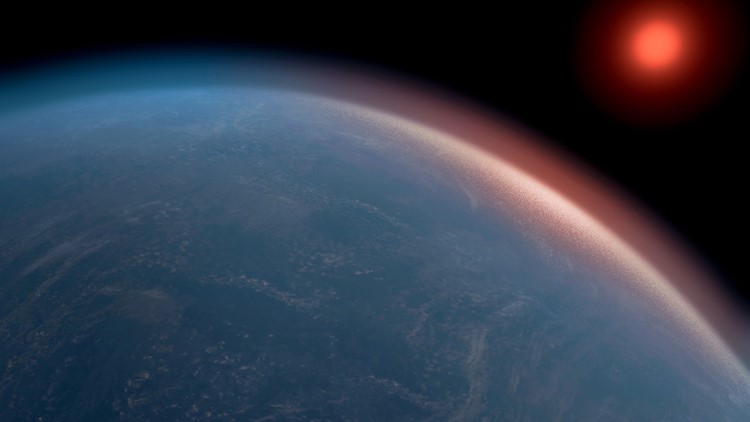A university student from Australia made a joint discovery of a planet the size of Earth located 40 light-years from our planet.
An Australian university student participated in the discovery of an Earth-sized, potentially habitable planet that is 40 light-years away.
Shishir Dholakia, a PhD candidate in astrophysics at the University of Southern Queensland, was part of the team behind the discovery and details were published in the Royal Astronomical Society’s Monthly Notices.
He described the “Eureka moment” of his discovery of the planet now known as Gliese 12b.
“We did the back-of-the envelope calculations,” he said. And we estimate, it might be an Earth-sized planet, it could be in the habitable zone, and it is definitively close by. In the span of a day we were like, ‘Oh, we have to write this up. This is really cool.
“It could be at the right temperature for liquid water to pool on the surface … [that’s] important because we think planets are potentially habitable if they can have liquid water on them.
“And so in this great search for life that we’re undertaking we want to try to find planets that are potentially habitable, and this could be a good contender. ”
Gliese 12b is about the size of Earth or slightly smaller than Venus. It is estimated that the surface temperature is 42 degrees Celsius.
Its twelve day long orbit is around a cool red dwarf, Gliese 12, which is located in the constellation of Pisces. Gliese 12 is about a quarter of the size of the sun and its surface temperature is 60% of the sun.
Dholakia spearheaded the team that was involved in the confirmation of the new planet in collaboration with Nasa in conjunction with other researchers including a PhD student from the University of Edinburgh known as Larissa Palethorpe.
“It’s only 40 light years away, and this might not mean that we can actually get to it any time in the near future, but it does mean that we can point the largest space telescopes in the world at it, and have a pretty fair guess as to what it’s atmosphere might be like,” Dholakia said.
Which could help explain our own solar system.
Earth and Venus can be taken as examples of how having an atmosphere can alter the terrain of a planet. Thus, Earth is this planet that supports life in its familiar forms while Venus is even hotter than Mercury and can melt lead on its surface.
“And the difference between these two planets is largely because Venus has a very hostile atmosphere. ”Therefore, this planet which receives middle amount of light from its sun as compared with Earth and Venus should be able to fill this … and explain why Venus and Earth are as different as they are.
He said he mostly enjoyed the process even if there were times when it was “intimidating”.
As stated on NASA’s official website, Tess works to detect tens of thousands of stars’ brightness variations in search of “transits” – “brief, regular dips in the brightness of stars due to passing planets”.
Earth-size planets are easier to detect in orbit around red dwarfs because the transit signal is deeper, due to the smaller size of the star, and the planet’s gravitational influence induces larger reflex motion.
According to Nasa, Gliese 12b is relatively promising for more detailed examination with the help of the James Webb space telescope.
A prominent US astronomer claims that there is a new planet out there somewhere even closer to us. As ABC reported, Michael Brown, a planetary astronomy professor at the California Institute of Technology said on Friday that he does not know how we could have a solar system “without Planet Nine”.
For years, he has said that the orbits of various objects in the Neptune’s vicinity suggest the presence of another planet but no one was able to find it.
In a paper not yet published in a scientific journal, Brown and his colleagues conducted simulations and realized that the probability of failure to detect the existence of Planet Nine was one in a billion.
Do not forget to share your opinion with us to provide you with the best posts !




0 Comments